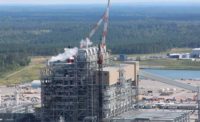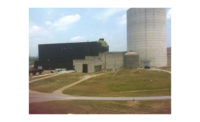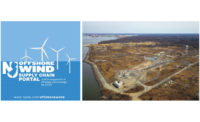Seeking to realize President Trump’s vision of “beautiful, clean coal,” the Dept. of Energy is investing $61.6 million in 13 projects for cost-shared research and development of current and advanced carbon-capture technologies. The investment aims to leverage an estimated total of $88.34 million of R&D in a technology whose promise has outstripped its achievements for decades.
Carbon capture and sequestration (CCS) has been touted for years as the savior of the fossil-fuel industry, but few commercial operations have been built. Petra Nova, one of only two operating power plants with carbon capture and storage in the world, has successfully reduced CO2 emissions since January 2017, but its singularity emphasizes the technology’s challenge. It hinges on separating carbon dioxide from the flue gas of fossil-fueled power plants and injecting it into storage or utilizing it for profit. Statoil, Norway’s state-owned oil company, pioneered the practice, capturing and storing about 1 million tonnes of CO2 annually since 1996.
But the technical challenges to CCS have proved insuperable despite investment of many billions of dollars in demonstration and pilot projects. Among the most recent disappointments was the Kemper County Energy facility, a $7.5-billion lignite-gasification project in Mississippi that suspended gasification and switched to natural gas fuel last summer after exceeding its construction budget by more than $4 billion.
On Feb. 16, DOE announced it would invest $44 million in seven projects with a total value of $66.3 million for R&D of “next-generation carbon capture systems.” On Feb. 22, the department announced selection of six more R&D projects with total value of $22 million to address the cost and operational challenges associated with current CO2 capture technologies that are commercially available for industry. DOE will award $17.6 million in federal funds for those projects.
Petra Nova has been a bright spot in the carbon-capture picture. It is a joint venture of NRG Energy Inc. and JX Nippon Oil & Gas Exploration at NRG’s 4,044-MW W.A. Parish pulverized-coal-fired generating plant in Thompsons, Texas. It has captured more than 90% of the CO2 in the 240-MW-equivalent slipstream of flue gas from one 654-MW unit of the plant, says David Knox, spokesman. Piped to an oil field for enhanced oil recovery, the captured CO2 has boosted the field’s production from 300 barrels per day to 5,000, he adds.
One of the main obstacles to successful carbon capture is the high demand for power, known as parasitic load, required to operate a carbon-capture system, including the compression to sequester the CO2. Petra Nova operates with no parasitic load, Knox says. Instead of drawing on the host plant’s power for the CCS operation, Petra Nova operates on a purpose-built cogeneration plant, selling the excess power into the grid.
The National Energy Technology Laboratory, which managed Petra Nova for the DOE, considers the project a potential model for future projects that integrate coal-fired power generation, post-combustion capture technology and enhanced oil recovery, says Ted McMahon, NETL federal project manager.
Both DOE announcements subdivide their focus into two “areas of interest.” Four of the awards in the Feb. 16 announcement are testing technologies as a small slipstream on actual gas; the three others are for commercial design, without testing, of a full-scale capture unit for a selected power plant. The design will include an estimate of cost to actually build the unit and install it, says Lynn Brickett, NETL carbon capture technology manager.
The focus of the investments in the Feb. 22 announcement is on providing additional development to current, commercially available CO2 capture technologies, including improving their reliability and operational flexibility, reducing high capital costs and reducing the high energy penalty associated with operating existing technology.
Five of the six projects will aim to develop materials and processes for CO2 capture that will enable step-change reductions in the capital and energy cost. The sixth focuses on enabling technologies that facilitate improved performance of CO2-capture processes to reduce capital cost and energy penalties and improve operational reliability and flexibility.
The project with the highest total cost, $23 million, was awarded to RTI International, Research Triangle Park, N.C. RTI will conduct engineering-scale testing at the Technology Centre Mongstad, Norway, to advance its non-aqueous (water-lean) solvent-based CO2 capture technology. This technology was the subject of an earlier DOE research grant at a pilot scale, says Dennis Gilmore, senior director, advanced process technology. The new project will be tested at a 10-MW scale at TCM in Norway.
Aqueous amine-based technology for CO2 capture is practiced on commercial scale around the world, Gilmore says. The amine solution captures the CO2 but then requires energy to release the CO2 and regenerate the free amine, he explains.
RTI’s non-aqueous solvent contains amine, but is able to release the CO2 and regenerate free amine with lower energy consumption. “What we’re working toward is a capital asset that would need to be installed in an operation that would take the effluent hot gases from some combustion operation and very effectively process those in a way where the CO2 is captured, and once captured and released in this loop, can be used for other purposes,” Gilmore says.






Post a comment to this article
Report Abusive Comment